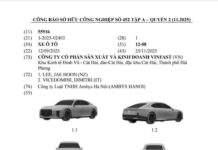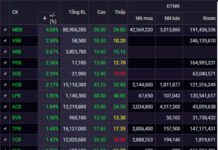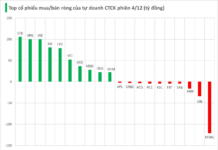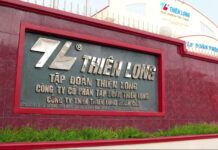The pile-up accident on Phu My Bridge on August 8th attracted widespread attention not only for its severity but also because the driver of the Volvo car miraculously survived the crash.
At the scene, flames raged, and multiple vehicles were severely damaged. The Volvo XC90 was left crumpled and deformed, yet it remarkably protected its occupant. Many believe that the car’s sturdy construction and world-leading safety technology played a crucial role in the driver’s survival.
Indeed, Volvo is synonymous with safety. In 2021, the company became the only car manufacturer to have all its models achieve the highest safety ratings in the US.

The white Volvo car was left deformed after the accident on Phu My Bridge. Image source: NLD Newspaper
Where Does Volvo Come From?
Volvo is a renowned automotive brand established in 1927 in Gothenburg, Sweden. The company specializes in developing a range of vehicles, from passenger cars and buses to trucks.
In 1999, Volvo was acquired by Ford and became part of the Premier Automotive Group. Later, in 2010, the Geely Group purchased Volvo from Ford. Currently, Volvo Cars is owned by the Chinese Geely Group.
However, Volvo’s main production facilities and research and development centers remain in Sweden. This ensures that Volvo vehicles continue to embody the brand’s core values of safety, durability, and elegant Nordic design.
Volvo entered the Vietnamese market in 2016, competing with luxury brands such as Mercedes, Audi, BMW, and Lexus. Its key models include the S90, XC90, and XC60.
Despite arriving later than other luxury car brands in Vietnam, Volvo has established its own niche. Within a few years, Volvo rapidly gained market share, consistently ranking among the top brands. Vietnam has also become Volvo’s fastest-growing import market globally.
In 2017, Volvo sold 118 vehicles in Vietnam, but by 2021, that number had surged to nearly 1,000. According to Nhịp Cầu Đầu Tư, in 2022, the luxury car market in Vietnam grew by 36%, while Volvo nearly doubled that growth rate, achieving a remarkable 67% increase. Volvo was ranked among the top 2 imported luxury car brands in terms of sales.
At the Car Awards 2022, the Swedish automaker outshone numerous prestigious brands in the luxury car segment and was honored in the most prestigious category: “Car of the Year 2022” with its XC60 Recharge model.
In the past year, Volvo’s sales in Vietnam exceeded 1,600 vehicles, a 50% increase compared to the previous year. This achievement has propelled Vietnam to become one of the fastest-growing markets for the Swedish carmaker globally.
Below is a reference table of Volvo car prices in the Vietnamese market:
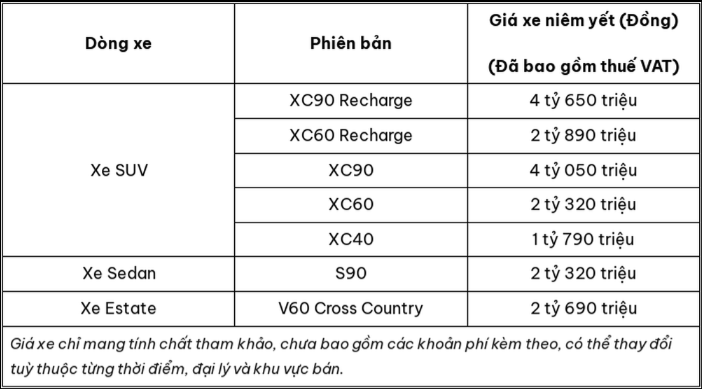
Reference table of Volvo car prices in Vietnam
Safety First
Volvo made headlines when Lex Kerssemakers, CEO of Volvo North America, declared in 2007: “No one will be killed or seriously injured in a new Volvo by 2020.”
And indeed, with nearly a century of development, Volvo is a pioneer in inventing safety technologies and applying stringent safety standards to its products, earning its reputation for building the “world’s safest cars.”
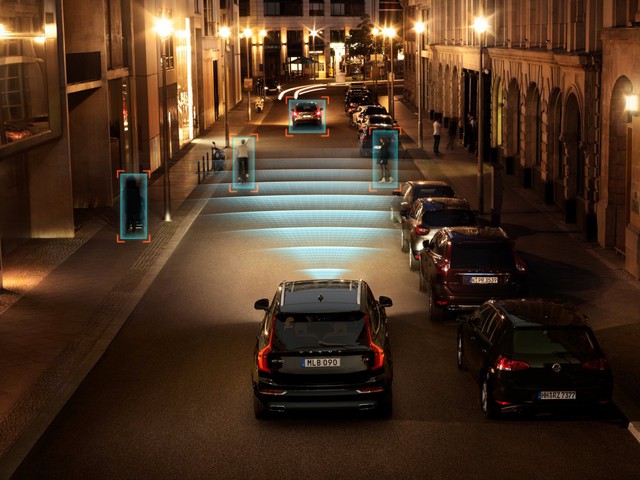
Image: Sensor system on Volvo cars
Impressive statistics underscore Volvo’s commitment to safety. According to BusinessInsider, from 2009 to 2012, there was only one reported fatality among passengers in the XC90 model. The IIHS (Insurance Institute for Highway Safety) also reported a driver fatality rate of just 4 per million accidents for the XC90.
The European car assessment program, Euro NCAP, awarded the XC90 a perfect score of 100% for its safety assistance technologies, 97% for adult occupant protection, and the highest overall safety rating in 2015.
Volvo’s history of safety innovations dates back to 1927 when it introduced the world’s first laminated windshield, which, upon impact, breaks into small pieces instead of large, sharp shards, reducing the risk of injury.
In 1944, Volvo invented the laminated windshield, consisting of two layers of glass with a plastic layer in between, which holds the shards together and prevents them from flying into the cabin.
In 1959, Volvo was the first to introduce the three-point seat belt, later adopting it as standard equipment across its commercial product range.
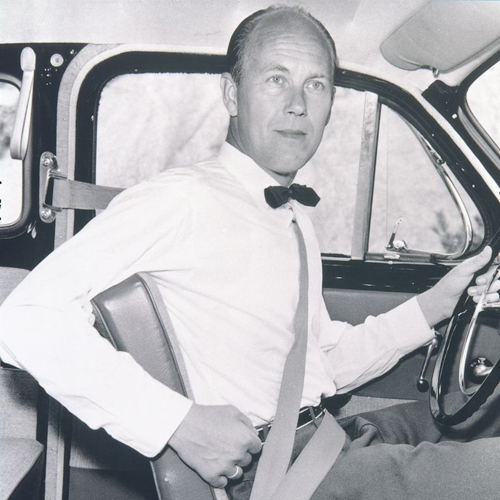
Image: Invention of the three-point seat belt in 1959. Source: Volvo
In 1964, Volvo developed a rear-facing child seat system.
Since 1970, Volvo has operated the Accident Research Team, a knowledge bank for traffic accident research.
In 1984, Volvo boldly equipped all its models with anti-lock braking systems (ABS), even as other manufacturers questioned its necessity. ABS has since become standard in modern automobiles.
In 1986, Volvo was the first to install a center-mounted brake light.
In 1998, Volvo introduced the curtain airbag as standard equipment, reducing the risk of death in side-impact collisions by 40% and the risk of brain injury in rollovers by 55%, according to independent tests.
In 2004, Volvo introduced the BLIS system, which detects vehicles in the blind spot and alerts the driver with a light on the mirror. The same year, Volvo also introduced daytime running lights.
In 2006, the Personal Car Communication (PCC) remote control system became an optional feature on the new Volvo S80.
In recent years, Volvo has introduced entirely new safety features, such as pedestrian airbags, a system that detects pedestrians and cyclists, even in the dark, and Alcolock, which prevents drunk driving.
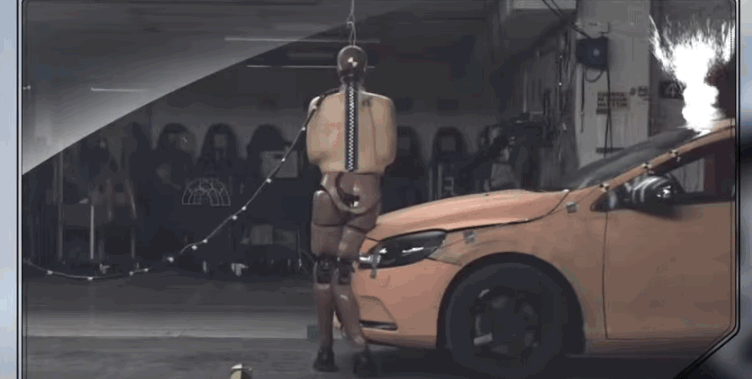
Image: Pedestrian airbag in action

Image: Detecting cyclists even in blind spots
In 2021, all Volvo models made the list of the safest cars in the US, as evaluated and ranked by the Insurance Institute for Highway Safety (IIHS). A total of 14 Volvo models were included in this prestigious list.


